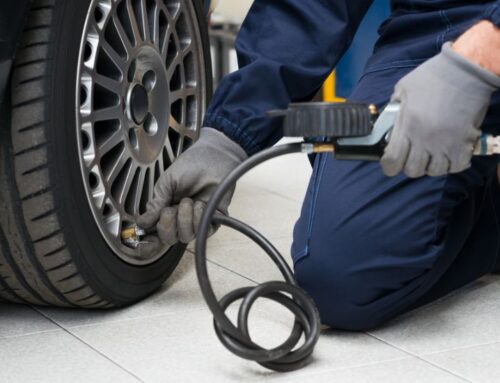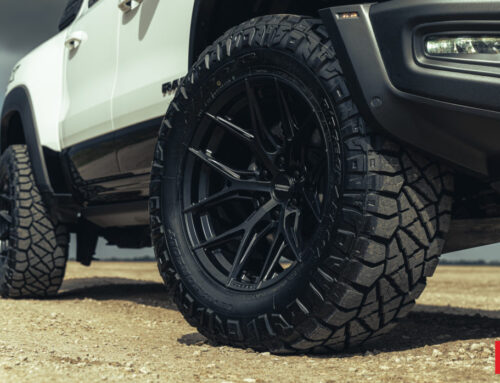How to Add Style Safely
In the world of luxury vehicles, customization is king. It’s not just about speeding down the autobahn in a high-performance machine; it’s about standing out from the pack. One increasingly popular way luxury car owners are making their mark is through vinyl wrapping – a versatile and temporary way to transform the exterior look of your vehicle. In this comprehensive guide, we’ll dive into the art and science of vinyl wrapping, offering savvy insights and practical advice to ensure that you can give your car a new look while treating your investment with the utmost care.
Understanding Car Vinyl Wrapping: Beyond Aesthetics to Protection
Car vinyl wrapping is more than just a color change; it’s a protective barrier for your car’s paintwork. Unlike a traditional car paint job, vinyl can be peeled off without damaging the original paint underneath. It shields the car from stone chips, abrasions, and environmental damage. Additionally, the aesthetic benefits are numerous. Custom graphics, chrome deletions, carbon fiber finishes, and every color under the sun are available through vinyl wrapping.
Why Wrapping Over Repainting?
Repainting a luxury vehicle can cost a small fortune. By contrast, vinyl wrapping is a more cost-effective way of achieving a new look. The process is also quicker, meaning less time off the road for the vehicle. Furthermore, the original factory paint is preserved under the vinyl, which is a huge benefit for the long-term value of the car.
Ensuring a High-Quality Wrap
The key to a successful vinyl wrap is quality, which encompasses not just the material used but the skill of the installer. Opt for high-quality cast vinyl – it’s durable and offers a paint-like finish. The vinyl should be UV resistant and have long-term adhesive capabilities. Expert skill in preparation is vital; the surface must be thoroughly cleaned and any imperfections corrected before wrapping. Finally, the installation process demands attention to detail and finesse.



The Vinyl Wrapping Process: A Step-by-Step Breakdown
Understanding the steps involved in vinyl wrapping is essential to appreciate the intricacies of the process and set expectations accordingly.
- Step 1: Design and Material Selection
The journey begins with design. Luxury car owners often make use of professional designers who create custom liveries or color schemes. Material selection follows, with considerations for brand, color, finish, and texture. - Step 2: Pre-Wrap Preparation
This phase is crucial for a successful wrap. The car must be cleaned, and any imperfections in the paint corrected. This ensures the vinyl can adhere properly and that the finished product is free from blemishes. - Step 3: The Application
Wielding large sheets of vinyl requires skill. Professional installers use a variety of techniques to ensure a smooth application, which may include heat guns to stretch the material into complex shapes. This stage is labor-intensive and requires patience and precision. - Step 4: Post-Wrap Finishing
Once the vinyl is applied, the edges and corners are trimmed for a perfect fit. Any post-installation heating or stretching necessary for the final fit is done at this point. The car is then thoroughly cleaned to remove any adhesive residue and to prepare for the final inspection. - Step 5: The Reveal
The most satisfying part of the process is peeling back the protective layer and revealing the new-look vehicle. It’s a moment of transformation that’s always exciting for the owner.
Maintaining Your Wrapped Vehicle: TLC for Your Investment
The work isn’t over once your vehicle is wrapped. To extend the life of the vinyl and maintain its look, proper maintenance is essential.
Regular Cleaning
A gentle hand wash is preferable to using a pressure washer, which can damage the edges of the vinyl. Avoid automatic car washes that use brushes, as they may be too abrasive on the wrap.
Minimizing Damage
The wrap isn’t invincible. Though it provides protection, it can still be punctured by sharp objects, so avoid parking near construction sites and be mindful of your surroundings.
Temperature Considerations
Vinyl wraps can be affected by temperature extremes. In cold weather, the material can become stiff; in hot weather, the adhesive can soften. Store your vehicle in a moderate climate if possible.
When to Say Goodbye to Your Vinyl Wrap
Though a vinyl wrap can last for several years, there will come a time when either you tire of the design or it needs to be removed and replaced. Knowing when that time has come is essential.
Signs of Wear and Tear
Fading, peeling, or bubbling are signs that the wrap needs attention. Ignoring these issues can lead to damage to the original paint.
Doppler Effect
The Doppler effect is when the adhesive hardens, and the wrap becomes increasingly challenging to remove. It occurs over time and is accelerated by environmental exposure.
Professional Removal
Do not attempt to remove a vinyl wrap yourself. Professional installers have the necessary tools and techniques to remove the material without damaging the paint below.
Resale and Insurance Considerations
Before jumping into wrapping, consider how it might affect resale value and insurance coverage.
Resale Impact
For some buyers, the customization vinyl wrapping offers is a selling point. However, it can also detract from the resale value if the potential buyer doesn’t share your taste.
Insurance Adjustments
Inform your insurer about the wrap. Its cost and the degree of customization can affect the coverage you need. Ensure that your investment is protected in the event of any damage to the wrap or the vehicle’s factory paint.
Legalities: Staying Road-Compliant with Your New Look
It’s essential to be aware of the legal aspects of vinyl wrapping, particularly in relation to your car’s exterior appearance and advertising laws, which vary from state to state.
Reflectivity and Color Restrictions
Some states have regulations regarding the reflectivity and colors used on vehicles. Ensure your wrap is compliant with these laws to avoid issues with law enforcement.
Logos and Branding
If you choose to include logos or branding on your wrap, be aware of advertising laws. For example, certain placements or sizes of the logo may be prohibited.
DIY vs Professional Installation: Making the Right Choice
Finally, when deciding to wrap your vehicle, you must consider whether to undertake the process yourself or employ a professional.
DIY Pros and Cons
Doing it yourself can be cost-effective, and some find satisfaction in the process. However, the risk of damage to the vehicle and the reduced quality often outweigh these benefits.
Professional Pros and Cons
Professional installers guarantee a standard of quality and have the experience to handle complex jobs. They also offer warranties on their work, ensuring peace of mind for the client.
For our readers in Miami, you can count on Miami Power Wheels for top-notch vinyl wrapping services. With our expertise and high-quality materials, we can transform your vehicle with confidence. Whether you’re looking for a custom design or protection for your vehicle’s paint, Miami Power Wheels has got you covered.
Don’t hesitate to give us a call and start the journey towards a new look for your car today!
In conclusion, vinyl wrapping a luxury vehicle is about more than changing its appearance. It’s a statement of personal style and a commitment to preserving and enhancing an automotive masterpiece. With the right approach, you can enjoy a customized vehicle that turns heads while maintaining the underlying quality and value of your luxury investment.
Follow Us on Instagram






